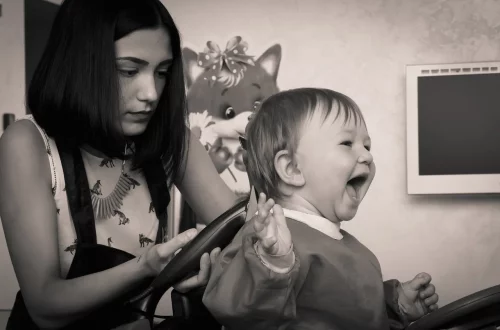
Exploring Life Bondage: Understanding the Depths of Commitment
Exploring the concept of life bondage invites us to delve into the intricate layers of human relationships and the commitments that bind us. This notion transcends the literal interpretation of bondage, leading us to consider the emotional, psychological, and social connections that shape our lives. In a world where individualism often takes precedence, understanding life bondage encourages us to reflect on the depth of commitment we make to ourselves and others.
Commitment can manifest in various forms: from the promises made in romantic partnerships to the loyalty we show towards friends and family. It raises questions about the nature of our connections and the sacrifices we are willing to make for those we care about. As we navigate through life, the concept of bondage becomes a metaphor for the ties that bind us—whether they are fulfilling or constraining. This exploration of life bondage encourages introspection, allowing us to assess the health of our relationships and the commitments we uphold.
While the term may evoke images of restraint, it also encompasses the freedom that comes with deep, meaningful connections. By understanding the dynamics of these bonds, we can cultivate healthier relationships and enhance our emotional well-being. The journey into life bondage invites us to reconsider our definitions of commitment and to acknowledge the strength that lies in vulnerability and connection.
The Nature of Commitment in Relationships
Commitment in relationships is a foundational element that determines the strength and longevity of any partnership. It encompasses various dimensions, including emotional, social, and sometimes even spiritual aspects. At its core, commitment is about choosing to invest time, energy, and resources into another person, thereby acknowledging their importance in our lives.
Emotional commitment is perhaps the most profound type of dedication. It involves a deep-seated loyalty and affection that goes beyond mere companionship. When two individuals commit emotionally, they create a sanctuary for each other, a safe space where vulnerability is welcomed, and trust can flourish. This bond is strengthened through shared experiences, challenges, and triumphs, which reinforce the connection over time.
Social commitment, on the other hand, plays a crucial role in how relationships are perceived and maintained within a broader community. This aspect involves the expectations society places on partnerships, such as marriage or cohabitation. These social constructs often dictate how individuals express their commitment and can influence their behaviors and choices. Understanding the pressures of social commitment can help partners navigate their relationship dynamics more effectively, allowing them to prioritize what truly matters to them.
Furthermore, spiritual commitment can also be a vital element in some relationships. For individuals who share similar beliefs or values, this bond can provide an additional layer of connection. It encourages partners to grow together in their faith or worldview, reinforcing their commitment to each other and their shared journey.
Ultimately, understanding the different facets of commitment allows individuals to approach their relationships with clarity and intention. Recognizing what each partner values in terms of emotional, social, and spiritual commitment can lead to more fulfilling and resilient connections.
The Balance Between Freedom and Bondage
One of the intriguing aspects of life bondage is the delicate balance between freedom and commitment. While the term “bondage” may carry connotations of restriction, true commitment should foster a sense of security that allows individuals to express their authentic selves. This paradox raises important questions about how we can be both free and bound in our relationships.
In healthy relationships, commitment does not equate to a loss of identity. Instead, it creates a supportive environment in which both individuals can thrive. When partners encourage each other’s personal growth and aspirations, they cultivate a sense of freedom that enriches their bond. This support is essential for maintaining individuality while also honoring the commitment to one another.
However, it is crucial to recognize when commitment begins to feel like bondage. If one partner feels stifled or restricted, it can lead to resentment and dissatisfaction. Communication is key in navigating these feelings; open and honest conversations about needs and boundaries can help partners adjust their commitments to ensure that both individuals feel valued and respected.
Moreover, understanding that commitment evolves over time is vital. As individuals grow and change, so too will their needs and priorities. A commitment that once felt liberating can become constrictive if not revisited regularly. By acknowledging this fluidity, partners can work together to redefine their commitments, ensuring that both feel fulfilled and free within the relationship.
Ultimately, the balance between freedom and bondage in relationships hinges on mutual respect, communication, and a willingness to adapt. By fostering an environment where both partners can grow and thrive, they can create a bond that is both strong and liberating.
The Role of Vulnerability in Deepening Connections
Vulnerability is often viewed as a weakness, yet it plays a pivotal role in deepening connections and fostering commitment in relationships. When individuals allow themselves to be vulnerable, they open the door to authenticity and intimacy. This willingness to share fears, hopes, and insecurities can significantly strengthen the bonds between partners.
When one partner takes the first step to be vulnerable, it often encourages the other to do the same. This reciprocal sharing creates a deeper understanding and connection, as both individuals learn more about each other’s inner worlds. The act of being vulnerable can lead to profound moments of empathy and compassion, which are essential for nurturing a committed relationship.
However, vulnerability requires a safe environment. For partners to feel comfortable sharing their innermost thoughts and feelings, they must trust that their partner will respond with kindness and understanding. Establishing this trust takes time and effort, but it is foundational for deepening the connection. Partners should strive to create a safe space where vulnerability is celebrated rather than judged.
Furthermore, embracing vulnerability can lead to personal growth. As individuals confront their fears and insecurities, they often discover new strengths and insights about themselves. This growth not only benefits the individual but also enhances the relationship as both partners evolve together.
To cultivate a culture of vulnerability, partners can practice active listening, empathy, and validation. By acknowledging each other’s feelings and experiences, they can create a more profound bond that is marked by authenticity and emotional intimacy. Ultimately, embracing vulnerability is a powerful tool for reinforcing commitment and deepening connections in any relationship.
Navigating Challenges in Life Bonds
Life bonds, like any relationship, are not without their challenges. Conflicts, misunderstandings, and external pressures can all test the strength of commitments. However, navigating these challenges is an integral part of the journey that can ultimately lead to stronger bonds.
Conflict is a natural occurrence in any relationship. When differing opinions or values arise, it is essential for partners to approach the situation with an open mind and a willingness to understand each other’s perspectives. Healthy conflict resolution involves active listening, empathy, and a focus on finding common ground. Instead of viewing conflict as a threat to the relationship, partners can see it as an opportunity for growth and deeper understanding.
Moreover, external pressures—such as work stress, financial difficulties, or family dynamics—can also impact the strength of life bonds. During these times, it is crucial for partners to support each other and communicate openly about their feelings. By facing challenges together, couples can reinforce their commitment and demonstrate that they are a united front, regardless of external circumstances.
Additionally, it is essential to recognize that not all bonds will withstand the test of time. Sometimes, relationships may reach a point where they no longer serve the individuals involved. Understanding when to let go is just as important as knowing how to nurture a bond. Ending a relationship can be painful, but it can also open the door to new opportunities for growth and connection.
Ultimately, navigating challenges in life bonds requires resilience, communication, and a shared commitment to understanding each other. By facing obstacles together, partners can emerge stronger, more connected, and more committed to one another than ever before.
In conclusion, exploring life bondage reveals the complexities of commitment and connection in human relationships. It encourages us to reflect on the nature of our bonds, the balance between freedom and commitment, the power of vulnerability, and the importance of navigating challenges. By embracing these elements, we can cultivate deeper, more meaningful relationships that enrich our lives.
**Disclaimer: This article is for informational purposes only and should not be considered medical advice. If you have health concerns, please consult a qualified healthcare professional.**




